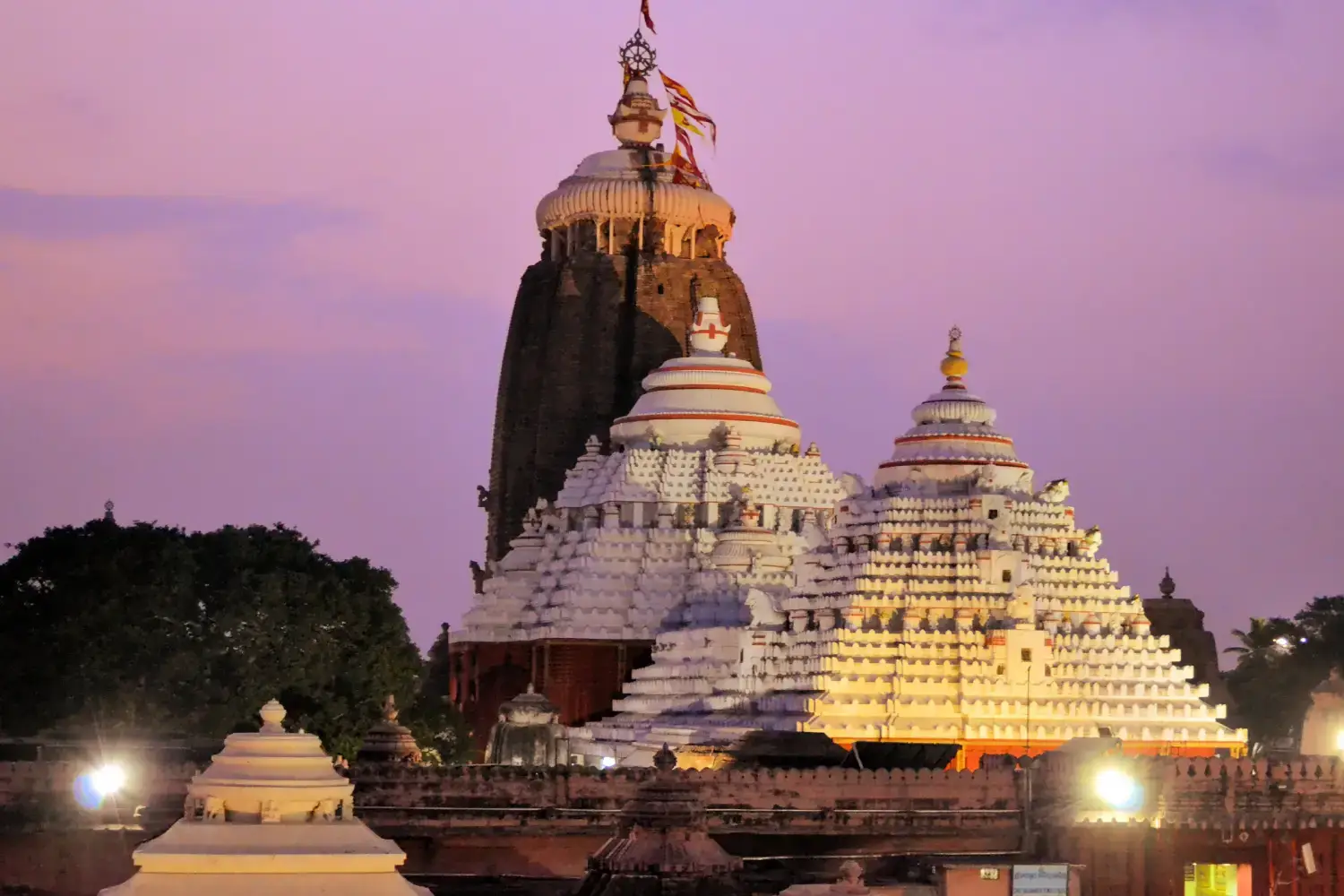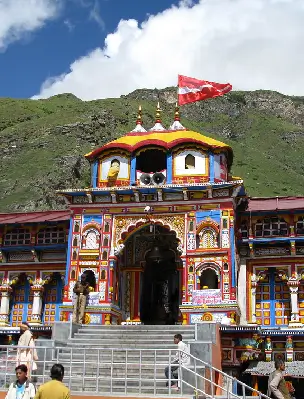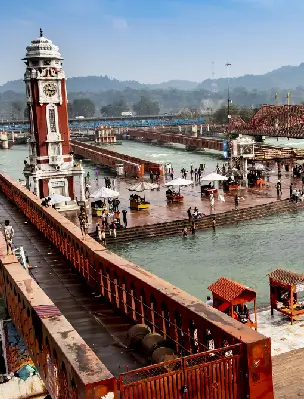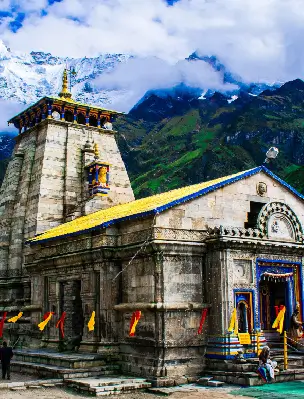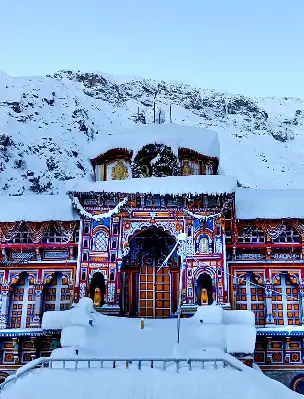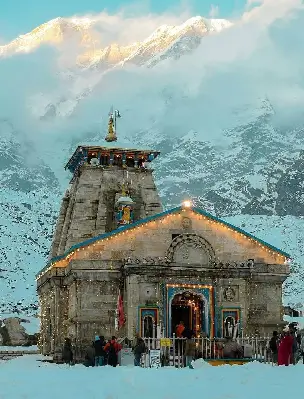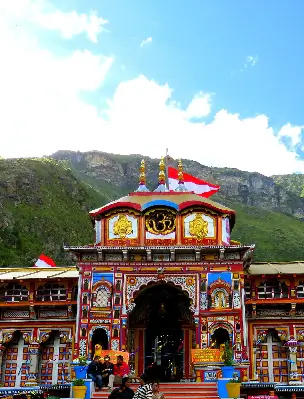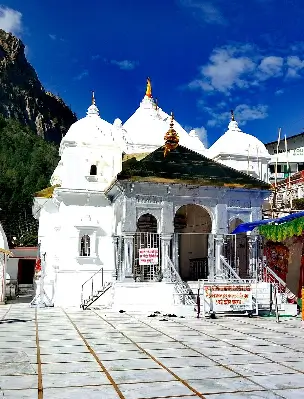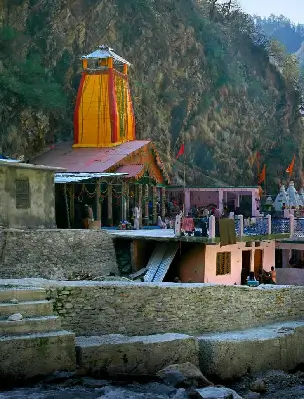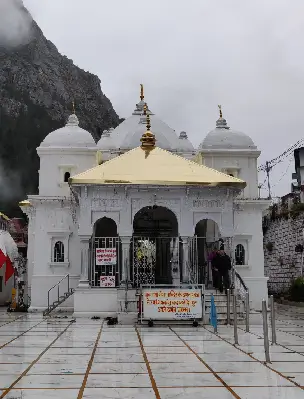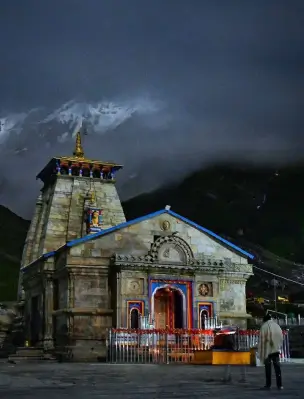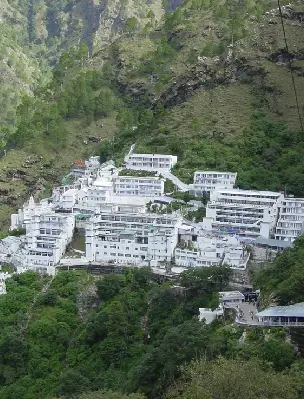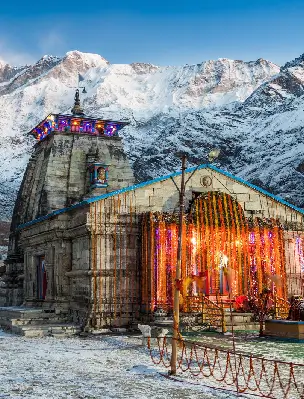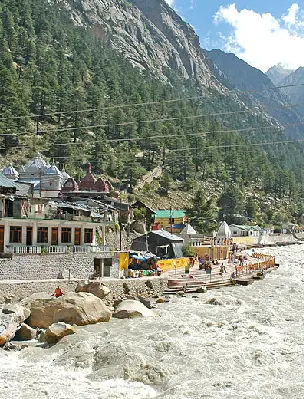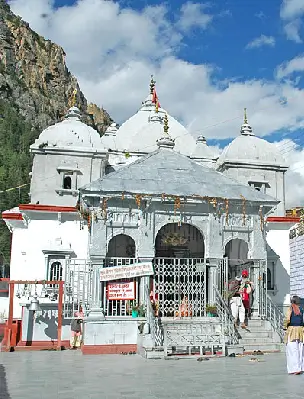Puri Odisha
The complete guide to Puri, Odisha, an important holy destination of the main Char Dham Yatra of India, detailing comprehensive information on top tourist places in Puri, the Lord Shri Jagannath Temple, Puri Rath Yatra, the best time to visit Puri, and other nearby destinations to visit.
Referred as the holiest of the holy cities in India, Puri, tops the list when talking about a religious destination near India’s east coast. The city brims with the magic of sanctity in every grain of its sand. Although blessed with equally alluring beaches, the religious significance of Puri in Hinduism dominates and influences people to visit from every stretch of the world. The holy city of Puri in Odisha is among four of the most sacred destinations, the Char Dhams in India and receives the footfall of millions of devotees every year.
The centre of Puri's religious decoration is the Jagannath Temple, one of the four holy abodes of God in the Hindu religion. Additionally, the grand Rath Yatra festival celebrated at the Jagannath Temple makes Puri tourism a longtime anticipated religious tour for spirituality buffs in northeast India.
Religious & Spiritual Significance of Puri
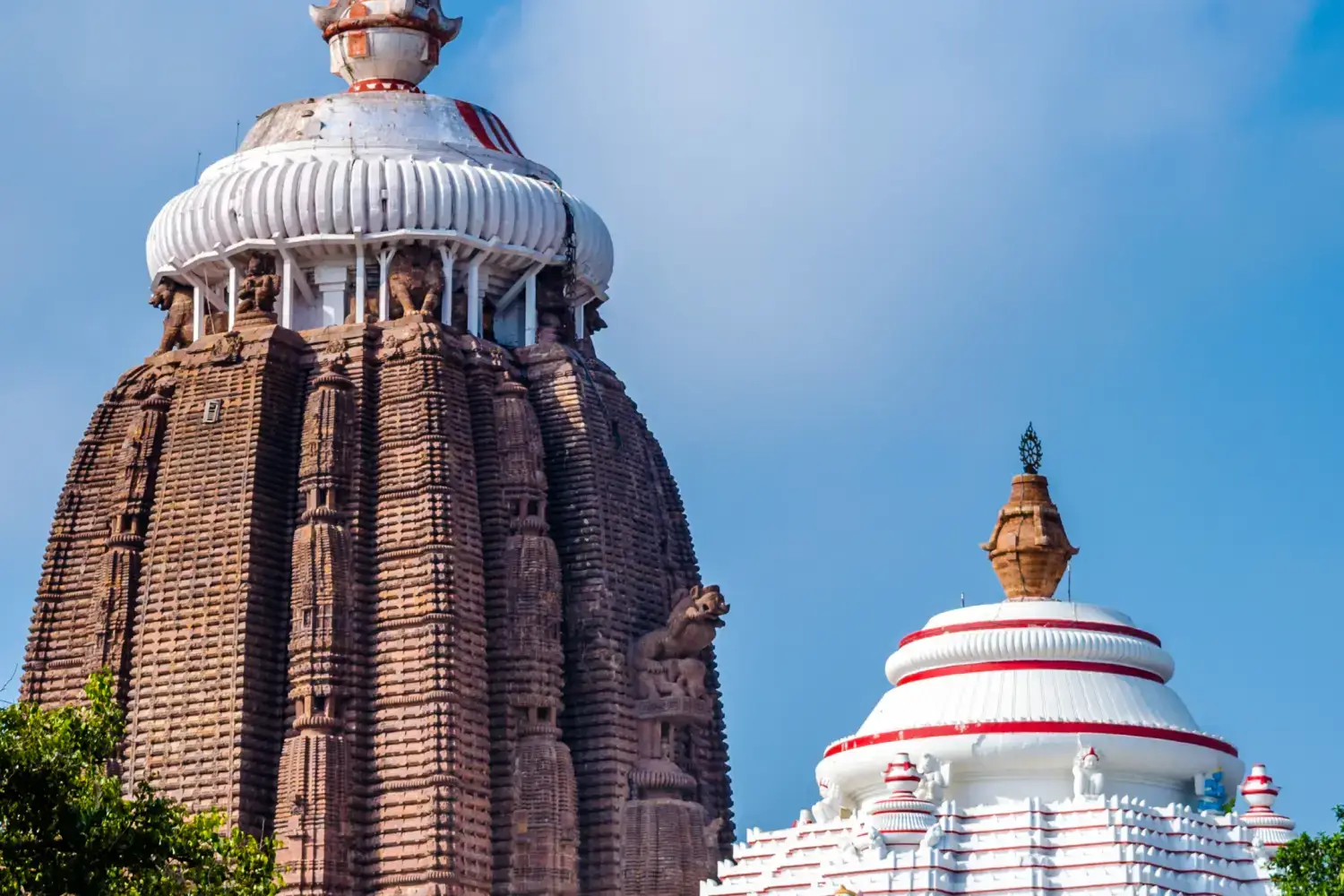
Puri in Odisha was considered a sacred land long before the present Jagannath Temple came into existence. The city is mentioned as "Purushottam Khetra '', the land of Purushottam referring to Lord Vishnu, in various ancient Hindu scriptures like Skanda Purana and Brahma Purana. The land originally finds its traces in the legend that follows the death of Lord Krishna, the avatar of Lord Vishnu. After Lord Krishna's cremated remains were released near Dwarka, his heart reappeared near the coast of Puri. Thus, the city is considered sacred by Hindus.
The sanctity of Puri was the reason the Shree Jagannath Temple was built here. The Indian Vedic intellect, Adi Shankaracharya, included Puri as one of the major Chardham destinations, among the four supreme abodes of divinity in Hinduism. He also established the centre of his vedic institute, the Govardhan Matha, in Puri.
According to many Hindu scriptures and Hindu beliefs, a person must commence a visit to Puri at least once in a lifetime, as it is believed to alleviate the effect of their sins in the afterlife.
Lord Jagannath Temple - The Main Attraction at Puri
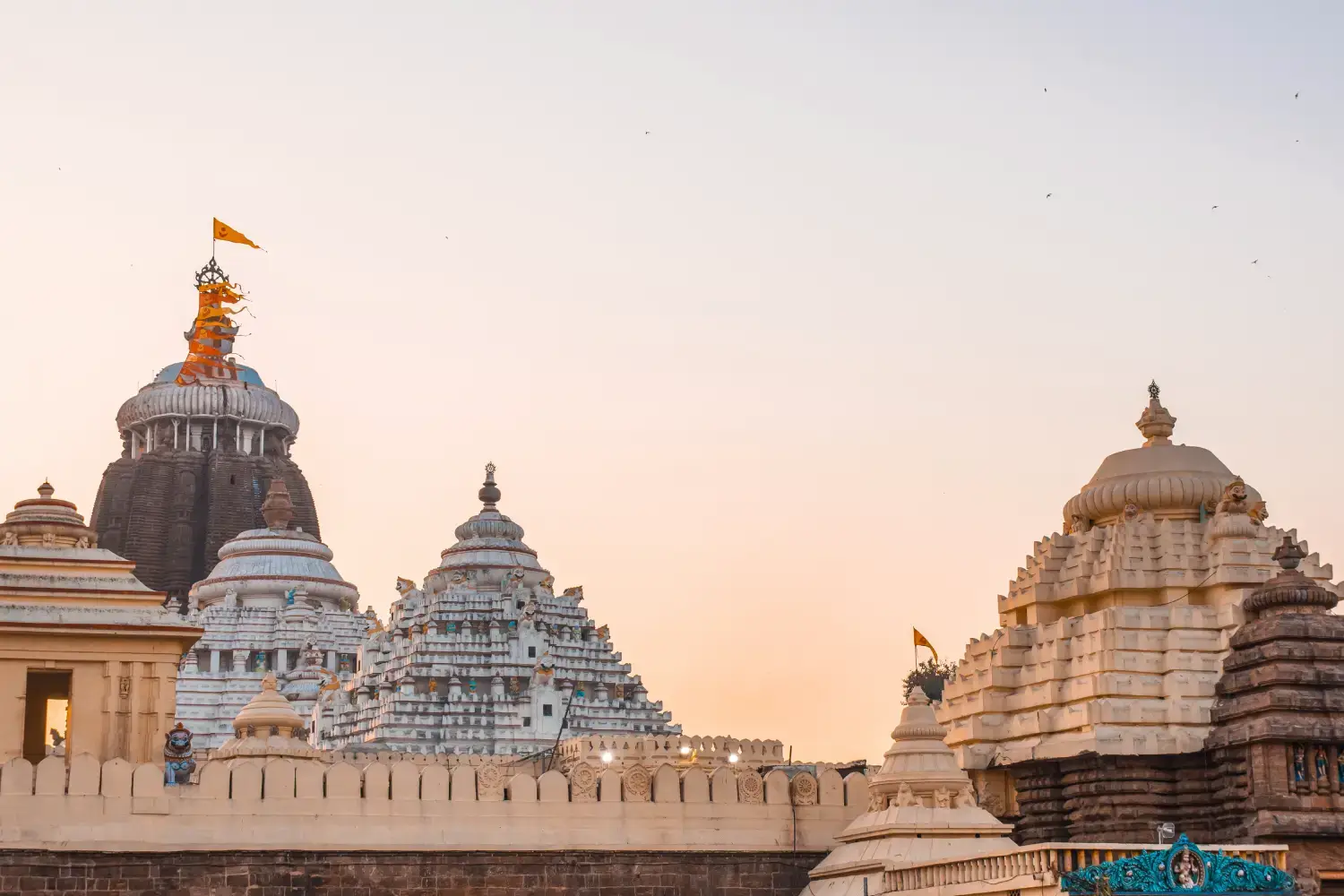
Puri is one of the four most sacred Dhamas (Holiest of the holy places) of India, and the city revolves around one of history's biggest living temples, Shri Jagannath Temple. Millions of tourists come to Puri throughout the year, and a huge section of these travellers head here only to visit the Jagannath Temple.
Jagannath Temple holds a very special place for Hindu devotees and a visit here is believed to help achieve "Moksha," eternal salvation, after death. Shree Jagannatha Temple of Puri is a symbol of India's rich cultural heritage, magnificent architecture, spiritual prominence, and religious sanctity. From intertwined tales from the past to the overwhelming force of devotion, and unwavering ritualistic perseverance to powerfully celebrated festivals, everything about Shree Jagannath Temple reflects its deep-rooted history and significance.
Significance
Shree Jagannath Temple holds immense spiritual significance in Hindu mythology and is one of the Char Dhams of India (four abodes of God), along with Badrinath, Dwarka, and Rameswaram in India. Hindus undertake the journey to all four Dhams, as journeying all of them is believed to result in attaining salvation after life.
The temple is dedicated to Lord Jagannath, an incarnation of Lord Vishnu, along with his brother, Lord Balabhadra and sister Devi Subhadra. Darshan of the deities in Jagannath temple is believed to bring spiritual benefits, thus millions visit here seeking inner peace.
Jagannath Temple is also called "Yamanika Tirtha," and according to Hindu beliefs, the power of "Yama", the God of death, is nullified in Puri due to the presence of Lord Jagannath.
The temple is also an architectural marvel, with a brilliance that impresses everyone. There are many interesting unexplored mysteries in this temple's build. One amazing fact about Puri Jagannath Temple is that the Mahaprasad (the consecrated food partaken by devotees), is never wasted but distributed completely everyday.
Shri Jagannath Temple is open to people of all castes and creeds of the Hindu religion and is also considered a non-sectarian place because Lord Jagannath is acknowledged in other religions like Jainism and Buddhism too. This symbolises the universality and inclusivity of Lord Jagannath.
History and Origin
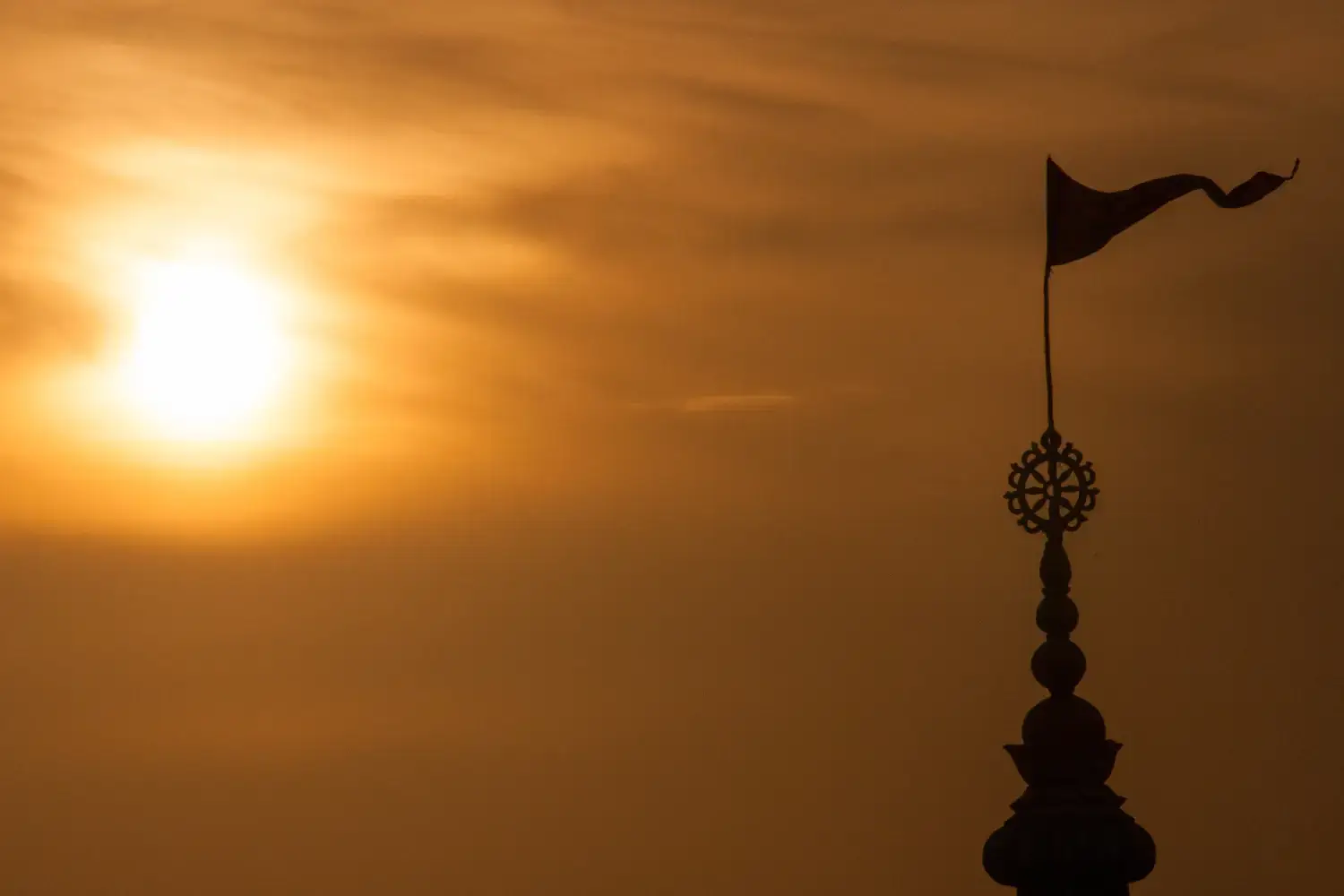
Jagannath Temple is among the most prestigious temples, not just in this day and age but for centuries. The temple is among the few that are this old and still this highly revered. Lord Jagannath temple’s history can be constricted into two most widely accepted origin stories. The first comes from the Hindu religious text, Skanda Purana, in which King Intradyumna commissioned many prominent sages of his time to suggest the most powerful place to worship the divine God. They recommended a place in the present state of Odisha named Purushottam Kshetra (Presently Puri). He then requested the divine architect, Vishwakarma, to carve the idol of Lord Jagannath to place it in a temple. Vishwakarma started carving the idol from a wooden log of Neem in a room and asked the King not to enter until he was finished. But as the days passed with Vishwakarma still in the room, King Intradyumna entered out of curiosity. The King didn't find Vishwakarma in the room but three mesmerising idols of Lord Jagannath, Baldeva, and Subhadra Devi. King Intradyumna made a huge temple and consecrated the idols which we see now in the Jagannath Mandir in Puri.
Throughout its history of Puri, the Jagannath Temple was a popular religious hub and attracted many Kings, conquerors, religious teachers, devotees, and pilgrims from far and wide. Since the temple's treasury, called Ratna Bhandar, has been the target of many invasions, in the 8th century, Adi Shankaracharya had to retrieve the idols from an invader and re-establish the temple. He also systematised rituals to worship Lord Jagannath, which are strictly followed till now.
Nevertheless, the present form of the Jagannath temple in Odisha is credited to King Anantavarman Chodaganga, as he rebuilt it in the 12th century. He was the most prominent ruler of the Ganga dynasty who built the Jagannath Temple in Puri in the latter half of his reign.
Architecture of Shree Jagannath Temple Puri
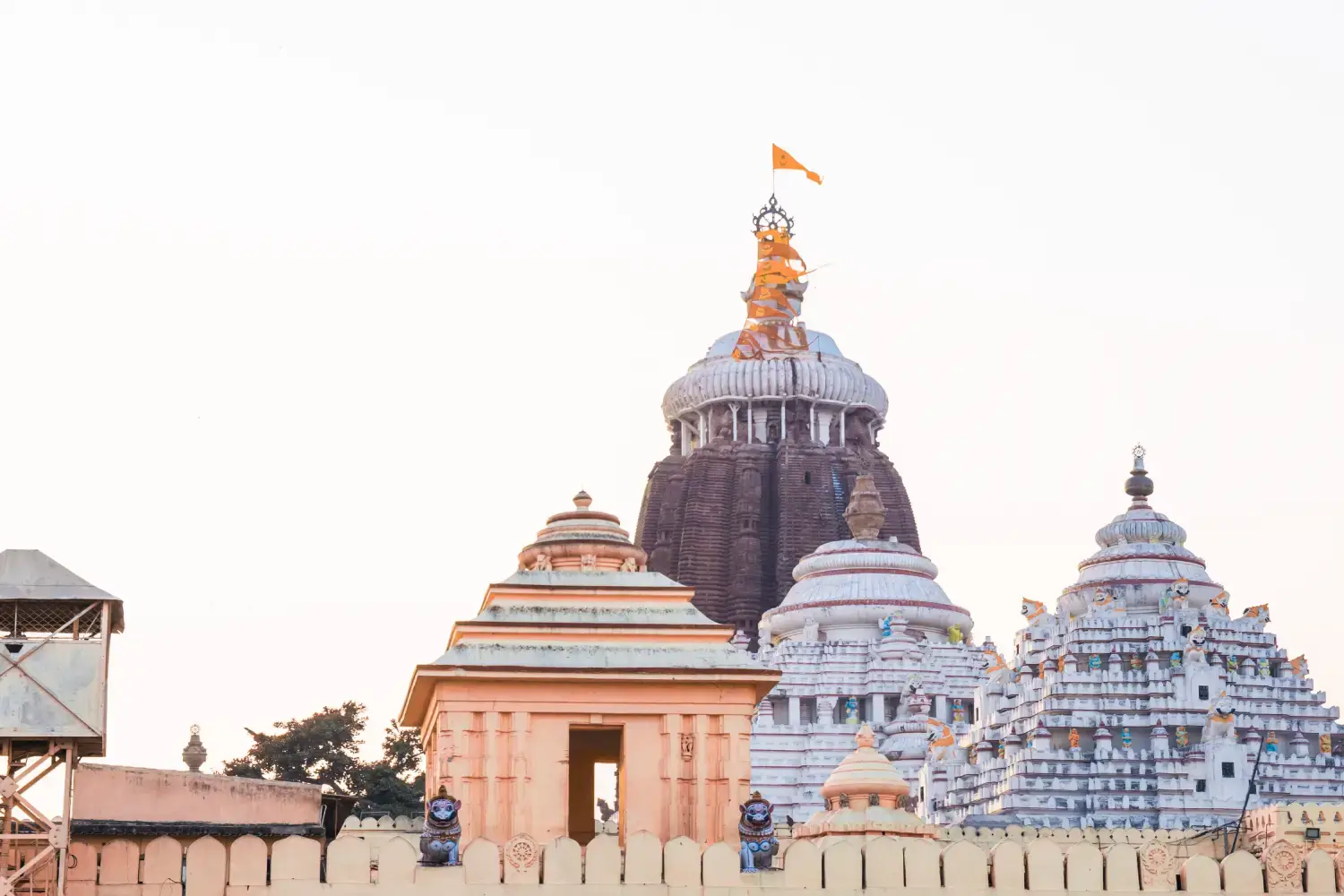
Of the six major temple architectural styles in India, Kalinga Architecture is known to bring intricacy to a level of brilliance. The Chardham temple of Shri Jagannath in Puri has the Kalinga architectural style, with two overall divisions, a main sanctum tower and a hall in front. The most striking feature of the temple is that no one has ever seen its shadow; the magnificent architecture allows the temple to cast no visible shadows.
Shree Jagannath Temple of Puri is a massive Hindu temple enclosed by two rectangular walls, Meghanada Prachira and Kumara Pradira. It features four entry gates, with the eastern gate, Singhdwara (Lion Gate), featuring giant statues of crouching lions. The main entrance is through this eastern gate, which also houses a 34-foot-tall chlorite metal pillar, Arun Stambha. The temple complex includes hundreds of structures and zones, including the kitchen, Seven Walls, Anand Bazar, two gardens, a holy banyan tree, and many subsidiary shrines. The main Jagannath temple structure has an east-west orientation and consists of four parts: Vimana/Deula, Jagamohana/Mukhashala, Nata Mandapa/Nata Mandir, and Bhoga Mandapa. The temple is built over a raised platform, with the Shikahar divided into five horizontal parts. The Shikhara is a curvilinear tower crowned by an eight-spoked wheel called Neelchkara, made up of Ashtadhatu elements and considered sacrosanct.
The Puri Rath Yatra- Spiritual & Cultural Experience
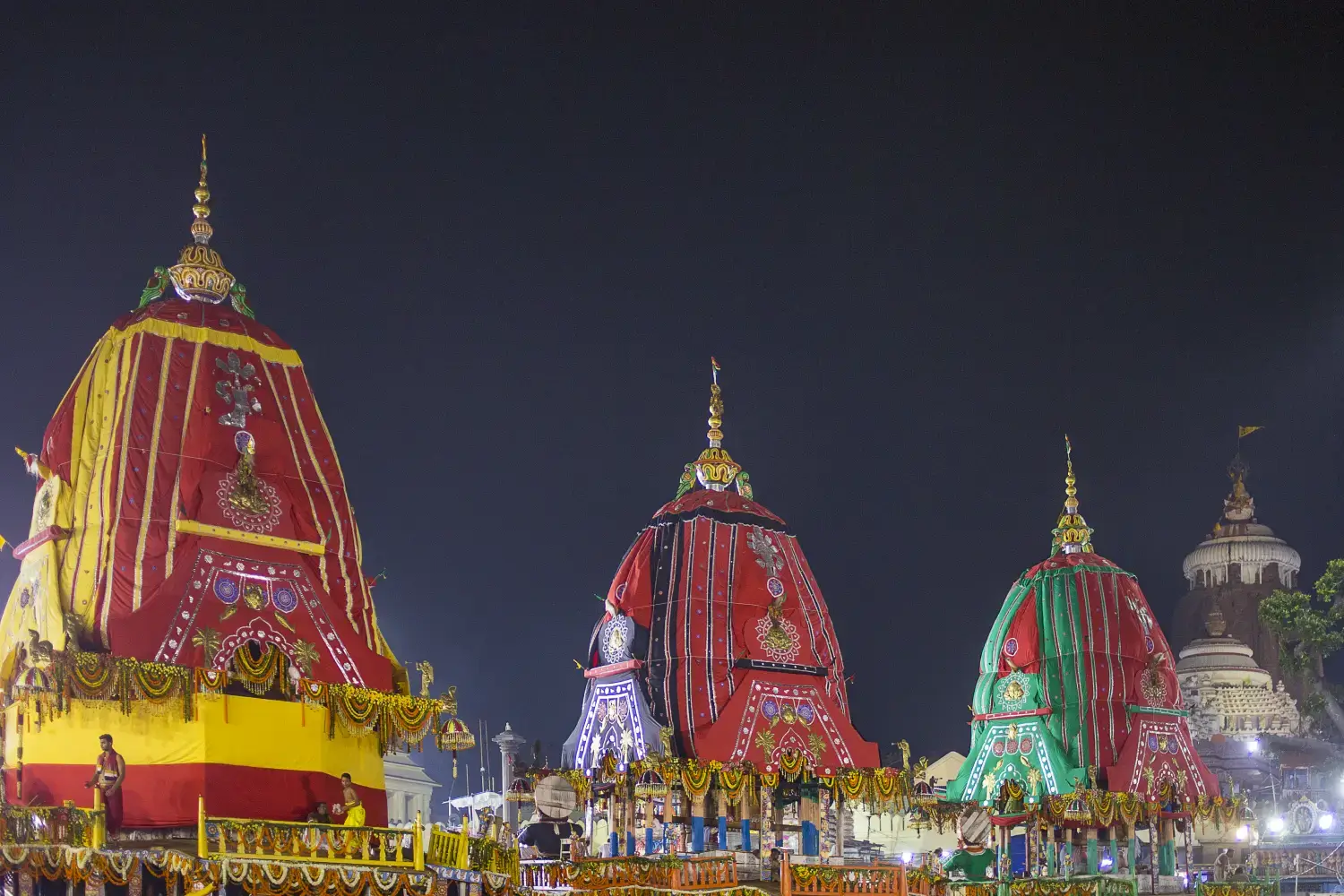
Rath Yatra, one of the biggest and most vibrant chariot festivals around the globe, is a public procession event when thousands of devotees throng the streets of Puri and pull three massive chariots in which sits the idols of Lord Jagannath, Lord Balbhadra, and Devi Subhadra. The chariots are pulled 3 kilometres from Shree Jagannatha Temple to the Gundicha Temple and then pulled back the same way.
This is the one of the few times deities of Shree Jagannath Temple are taken out; thus, the massive gathering of believers. This fortnight-long festival is among the liveliest events in the world and is part of the long history of India. It is a cultural extravaganza of vibrant colours, clothes, and flags, showcasing the rich tradition of the country. Though held yearly, one should witness the Rath Yatra at least once in a lifetime.
Origin of Puri Rath Yatra
Although various scriptures mention the history and various legends of Jagannath Temple, the exact origins of Rath Yatra, the temple's most celebrated festival, are not explicitly found within them. Still, this festival is one among the oldest in the History of India and has been celebrated for more than 2,000 years.
Nevertheless, there are multiple stories among the devotees about the reason it is celebrated. These stories reflect the socio-religious beliefs of the people in the region.
According to some references, Rath Yatra celebrates the day when Lord Krishna made his journey on a chariot from his childhood home Gokul to the capital of his kingdom Mathura.
The festival also refers to the day when Shri Krishna, after killing the tyrant ruler and his maternal uncle King Kaṃsa, appeared in front of the devotees on Chariot in Mathura. He accompanied his brother Balbhadra (Balram), and his sister Subhadra while sighting the Matura city.
A word-of-mouth story suggests that the queen of King Intradyumna, Devi Gubdicha, requested this ritual to be performed so the divinities of Jagannath Temple could come to appear and bless the followers who were not able to enter the temple.
Significance and Rituals of Rath Yatra
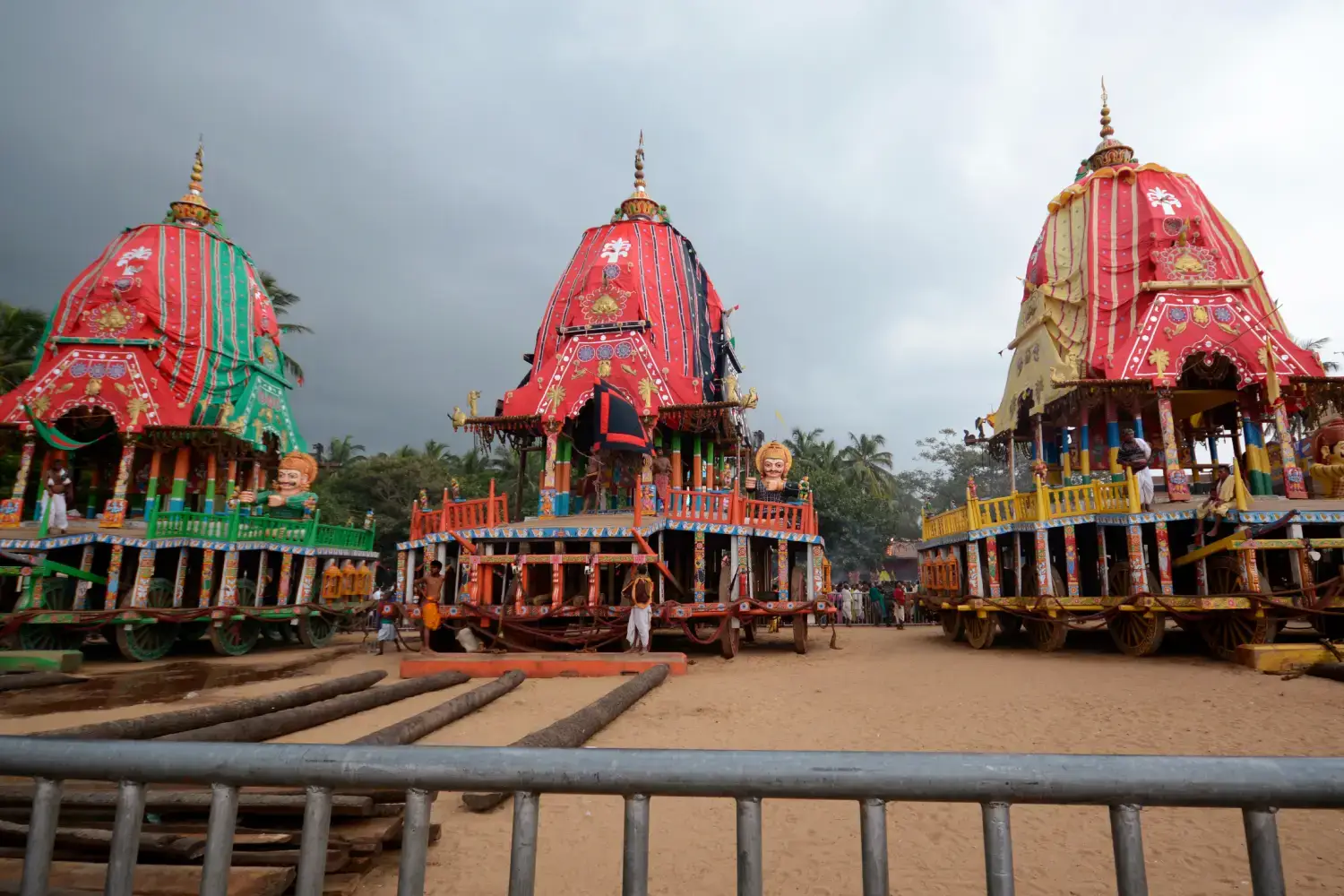
Rath Yatra is the most popular yatra among the twelve yatras of Shree Jagannath and is celebrated for nine days starting from Dwitiya Tithi of Shukla Paksha in the month of Ashadha i.e. the 2nd day of the bright fortnight in Ashad month (4th month of Hindu calendar). Every year, new chariots (Rath) are built before this occasion. According to the 'Bamadev Samhita,' witnessing or merely touching the chariot during the procession confers blessings of Lord Jagannath and the devotee gets a place in the heavenly abode after death.
The chariot of Lord Jagannath is called Nandighosa, has 16 wheels, and has red and yellow colour. Lord Balbhadra's chariot is named Taladhwaja, has 14 wheels, and is clothed in red and green. The third chariot is dedicated to Goddess Subhadra. This chariot is called Deviratha, has 12 wheels, and is red and black in colour.
On the 2nd day of Ashada month, The Mangalarpan Ritual is performed in which the idols of Lord Jagannath, Lord Balbhadra, and Devi Subhadra are placed on their respective chariots. It is followed by the Chhera Panhara Ritual in which the idols are decorated and chariots are mopped and swept. With the blowing of trumpets and beating of gongs, chariots are pulled towards the Gundicha temple. After completing the 3-kilometre-long journey, idols are placed and worshipped in the Gundicha temple the same way as were in the Jagannath Temple.
A Sandhya Darshan Ritual is performed one day before the return journey of Rath Yatra. Devotees can witness the idols one last time in Gundicha Temple.
The Bahuda Yatra is the returning ritual of the deities. It starts the culmination rituals of the Rath Yatra festival.
When the chariots reach the front gate of Shree Jagannath Temple, several rituals are performed like the Suna Besh ritual where idols are adorned with ornaments at Lion's Gate and the Adhar Pana ritual in which the deities are offered a special drink named Adhara Pana at the gate. On the 13th day of Rath Yatra, the Niladri Bije ritual concludes the festival when the idols of all three deities are placed at the Garbhagriha of Jagannath Temple.
The Best Time to Visit Puri, Odisha
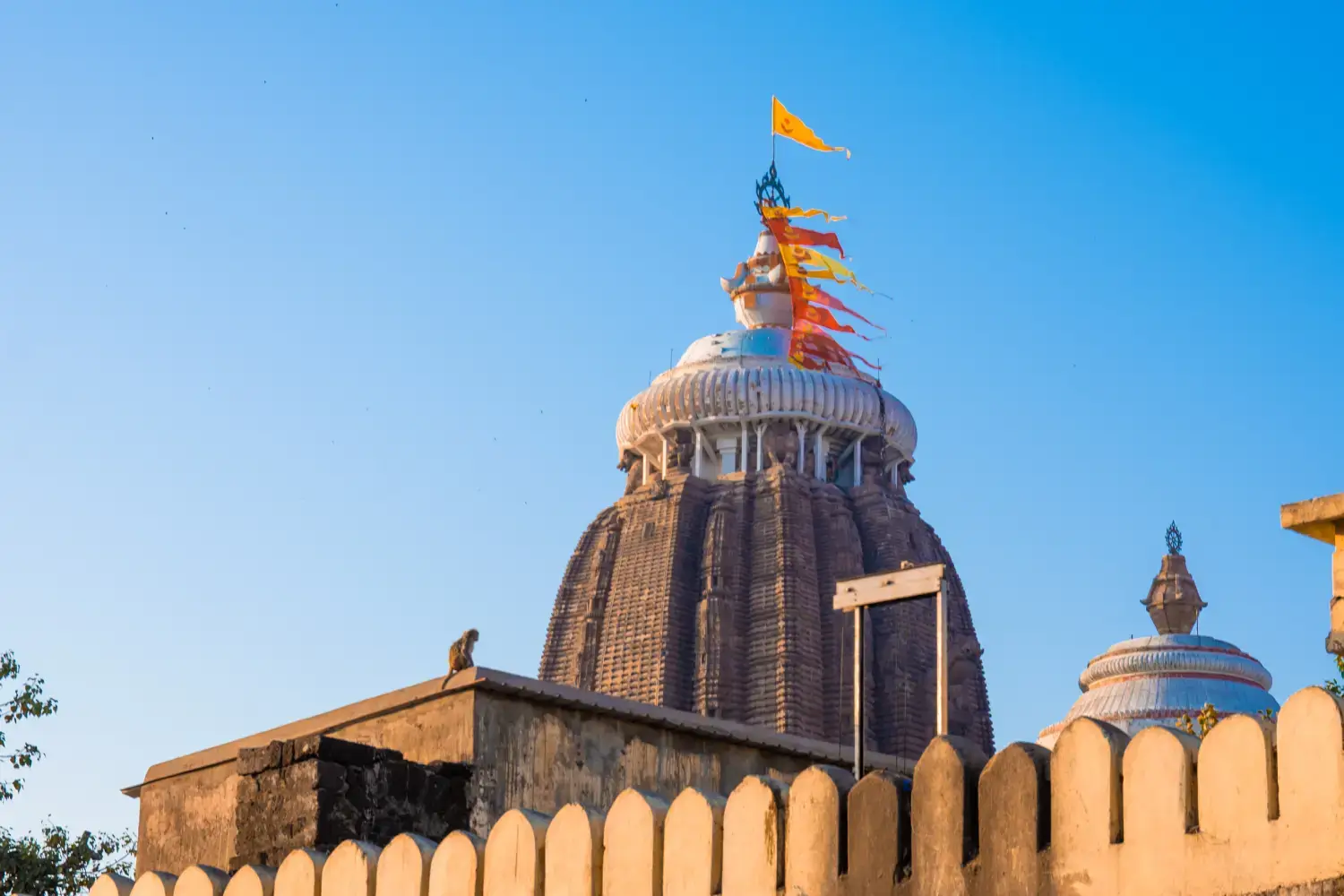
Puri is a coastal city and has moderate weather, i.e., neither too hot nor too cold months. Puri is not just a pilgrimage destination but a popular beach destination, thus the best time to visit depends on what you want to experience in Puri.
October to February (Winter) - Experience the City
Winter is the best time to visit Puri, either for spiritual reasons or to explore the city. The winter months are cool and pleasant with temperatures between 16-28 degrees Celsius. This is the perfect time for sightseeing in Puri, exploring the temple, relaxing on the beach, and enjoying outdoor activities. You can also witness various festivals like the Durga Puja, Diwali, and the Puri Beach Festival, but not the Rath Yatra festival in these months.
June to July (Monsoon) - See Rath Yatra Festival
The Rath yatra of Puri takes place in the months of June/July, thus this is the best time to visit Puri if you want to be part of this grand occasion. As it is when the monsoon just arrives, you will see occasional showers and comparatively high humidity.
How to Reach Puri?
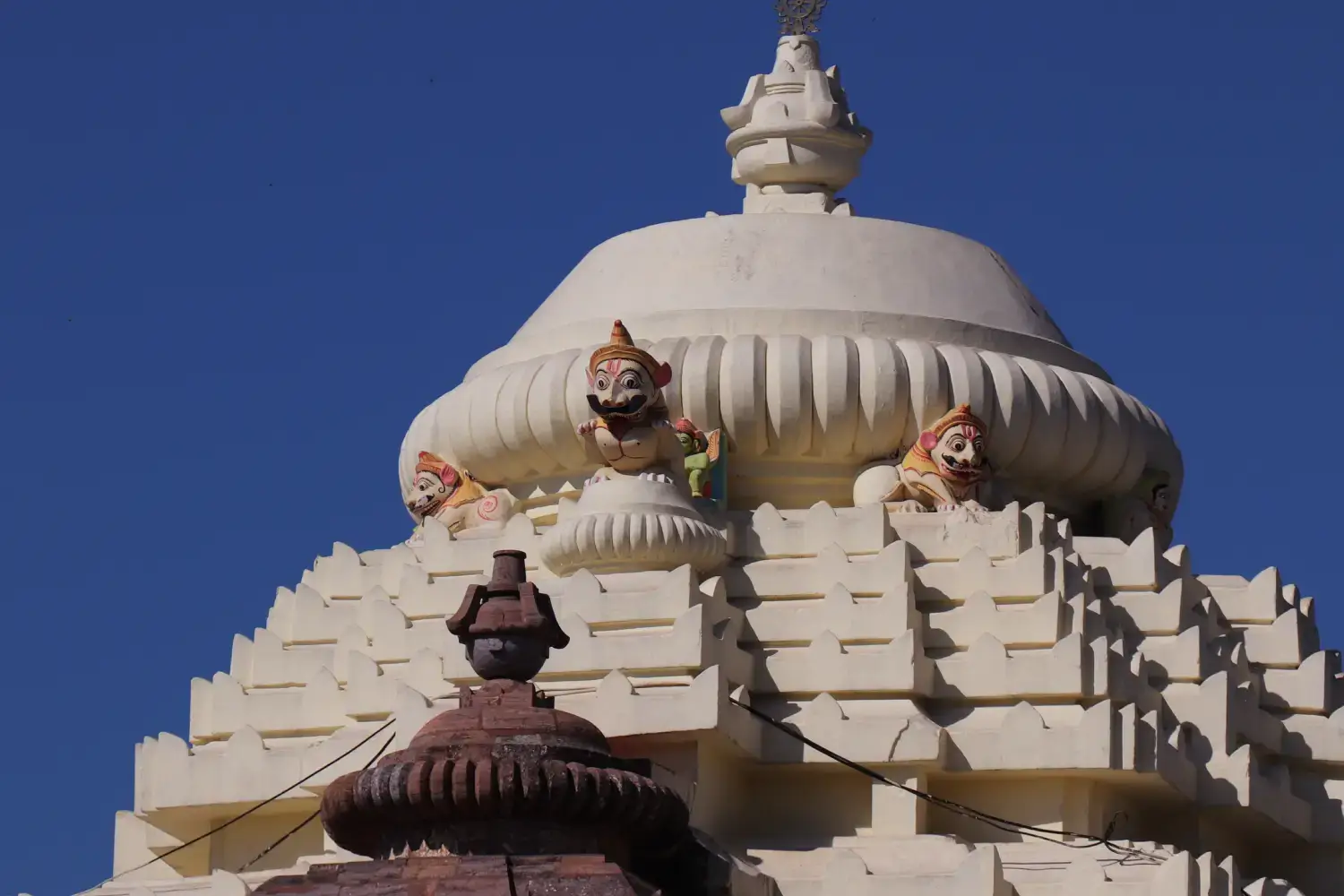
Puri is an easily accessible city with a good connection to all major cities of India through Air, Railway, and Roads. The most comfortable way to reach is by flight, Railway or Road journey to Puri traversing through scenic landscapes.
By Air: Biju Patnaik International Airport (Bhubaneswar), 60 kilometres (37 miles) from Puri, is the nearest airport to reach Puri. Take the all-time available taxis from the airport to the city.
By Train: This is the most economical way to travel to Puri. Puri Railway Station has trains from all major cities of India like Delhi, Mumbai, and Kolkata. You can easily find taxis at the station to reach Jagannath Temple or Puri Beach.
By Road: Puri is well connected to Cities across India through National Highways. The roads are well maintained and provide smooth travel. Puri also has regular bus services from nearby cities like Bhubaneswar, Cuttack, Kolkata, and others.
Other Popular Attractions to Visit in and around Puri
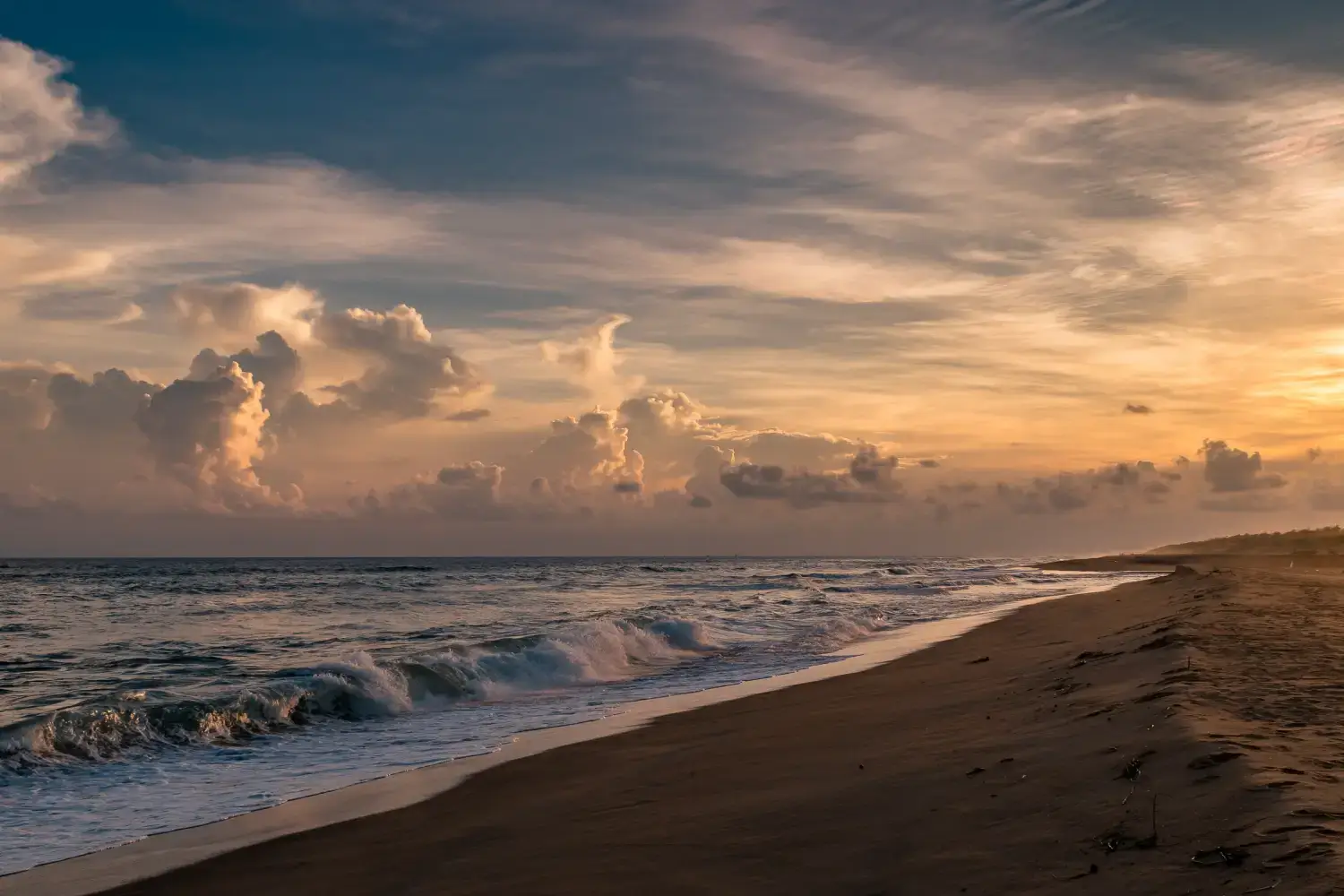
- Puri Beach
- Gundicha Temple
- Narendra Sarovar
- Chilika Lake
- Sun Temple Konark
- Pipli Village
Puri Beach
Offering devotees and tourists solitude and serenity, Puri Beach is yet another popular destination among travellers in Puri. It stays flocked with people either taking a dip to pay homage to Lord Jagannath or relaxing amidst nature. Puri Beach is also considered among the cleanest and safest beaches in India.
Gundicha Temple
Gundicha Temple is also called Aunt's House, as Lord Jagannath's Chariots in the Puri Rath Yatra festival are moved from the Jagannath temple to Gundicha Temple. It is 3 kilometres north of Shree Jagannath temple and has many interesting legends associated with it. The history and architecture of Jagannath Temple has been aligned with Gundicha Temple for centuries. The Gundicha Temple is built in an architecture style similar to the Jagannath Temple and beautifully planned to ooze spiritual aura.
Narendra Sarovar
Narendra Sarovar is the largest of ponds in Puri located to the north-east direction of Jagannath Temple. Also called Narendra Pokhari, the pond has an island with a temple dedicated to the holy triad: Lord Jagannath, Lord Balabhadra, and Goddess Subhadra. During the Rath Yatra festival, many devotees take a holy dip in this pond. Even Lord Jagannath is believed to come here during the Chandan Yatra, which is celebrated before the Rath Yatra in Asadh month. During the Chandan Yatra devotees throng its bank, singing and dancing.
Chilika Lake
The largest brackish water lagoon in Asia and the second largest in the world, Chilika Lake is where you will find a variety of birds, flamingoes, crocodiles, and even dolphins. This 65 km long, 8-20 km wide, and about 2-metre deep lake has more saline water than the fresh river water yet less saline than the seawater. The magnificent setting of nature and the water makes it a paradise for people in need of solitude with their significant ones. You can enjoy a boat ride in the shimmering lake to have a break from a monotonous routine.
Sun Temple Konark
Another architectural prominence of the Kalinga style, the Sun Temple, is a 13th-century temple dedicated to Sun God. It is not a usual temple but a UNESCO World Heritage Site that defines the fine ancient Indian architecture. The temple is designed like a chariot and has 24 wheels carved with numerous minute details and unique features. Four of the 24 wheels can be used as sundials to tell the time accurately. The temple is designed in such a way that the first-morning ray of the sun falls in the sanctum to illuminate it.
Pipli Village
40 kilometres from Puri is Odisha's most popular art village that exports the work of its artisans including applique clothes, toys, and souvenirs to the world. From the Somavamsi dynasty in the 10th century, this village is known for its antique work on clothing. Pipili even decorates the Puri Rath Yatra chariots. The village reflects Odisha's cultural image. You can see the Pipli artisan's work on various articles like lanterns, bags, bedsheets, pouches, umbrellas, wall hangings, etc. This is the best place near Puri to buy yourself a souvenir on your trip to Odisha.
You Might Also Like to Read
- The History of Kumbh Mela
- Chardham Yatra Offline Registration
- Tungnath Temple Opening & Closing Dates
- 12 Jyotirlinga Temples in India
- Madmaheshwar Temple Opening & Closing
- Badrinath & Hemkund Sahib Helicopter Yatra Services
- Kedarnath Yatra Helicopter Booking Guide
- Online/Offline Registration information for Chardham Yatra
- Char Dham Yatra by Helicopter
- Top Things to Carry with Chardham Yatra
- Best Places to Visit in Uttarakhand
- Best Places to Stay in Badrinath
- Best Places to Stay in Kedarnath
- Rudranath Temple Opening & Closing
- Online Puja Booking at Badrinath & Kedarnath Temple
- Places to Visit Near Badrinath Dham
- Akshaya Tritiya Festival Information
- Best Places to Explore Enroute Kedarnath Dham Yatra
- Ranikhet Tourism- Top Places to Explore & Things to Do
- Kalimath Temple Information
- History of Shri Kedarnath Temple
- Badrinath Temple History
- Gangotri Temple History
- Best Places to Visit in Puri Odisha
- Popular Religious & Spiritual Cities to Visit in India
- History of Yamunotri Temple
Popular Tours
Book The Tour
Char Dham Temples
Hotels in Chardham Circuit
Char Dham Tour Packages
- Char Dham Yatra From Delhi
- Chardham Yatra From Mumbai
- Char Dham Yatra From Ahmedabad
- Chardham Tour with Hemkund Sahib
- Chardham Yatra by Helicopter
- Char Dham Yatra with Vaishno Devi & Amritsar
- Chardham Tour with Gomukh Trek
- Char Dham Packages From Bangalore
- Chardham Yatra From Chandigarh
- Char Dham Yatra with Auli
- Char Dham Yatra From Hyderabad
- Char Dham Yatra with Vaishno Devi, Jwalaji & Amritsar
- Char Dham Yatra From Chennai
- Chardham Packages From Bhopal
- Char Dham Yatra by Luxury Vehicle
- Char Dham Yatra with Satopanth Lake
- Char Dham Yatra with Panch Badri Tour
- Char Dham with Valley of Flowers
- Chardham Yatra with Mahavatar Baba and Nainital Tour
Do Dham Yatra
- Badrinath Kedarnath Yatra From Haridwar
- Badrinath Kedarnath Yatra
- Gangotri Yamunotri Yatra
- Gangotri Yamunotri Yatra from Haridwar
- Kedarnath Badrinath Yatra with Hemkund Sahib
- Kedarnath Badrinath Yatra with Valley of Flowers
- Kedarnath, Badrinathdham With Lake Of Nainital
- Yamunotri, Gangotri with Lake of Nainital
Ek Dham Yatra
- Badrinath Pilgrimage Tour
- Kedarnath Pilgrimage Tour
- Gangotri Pilgrimage Tour
- Yamunotri Pilgrimage Tour
- Kedarnath Yatra By Helicopter
- Badrinath Dham Yatra from Haridwar
- Badrinath Yatra with Hemkund Sahib
- Badrinath Yatra with Valley of Flowers
- Gangotri Dham Yatra with Gaumukh
- Kedarnath Dham Vasuki Tal Trek
